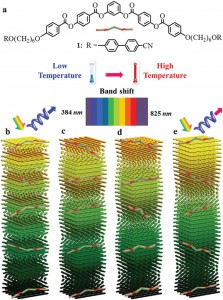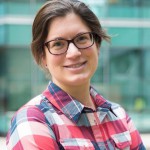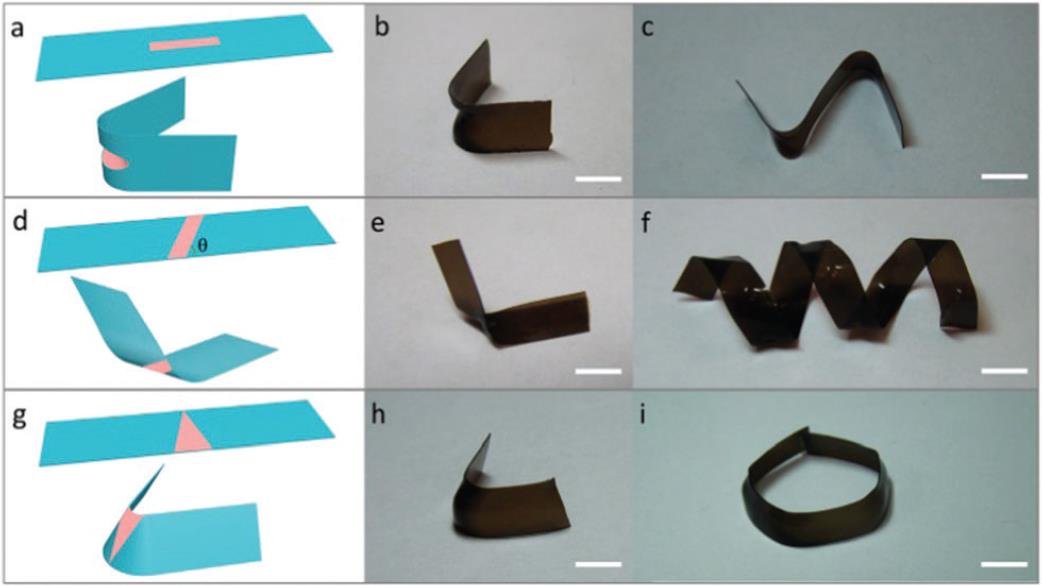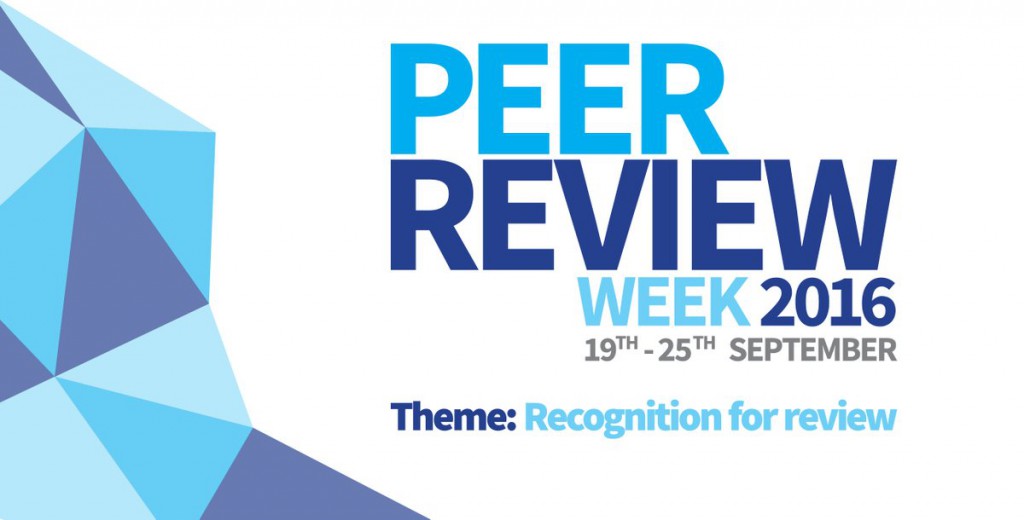
Fig. 1 Chemical structure of the bent-core oligomesogen 1 exhibiting different phases
A new helical superstructure that reflects light across the whole visible system has been reported in a new HOT article. The structure can be tuned to reflect light from ultraviolet through to near infra-red, in a wide temperature range.
Liquid crystals are intriguing materials which have properties of both liquids and crystals. They have found uses in many day-to-day applications, such as flat-screen televisions, but much about them, and the many phases they can exhibit, remain unknown.
Quan Li’s group, at State Kent University, had previously designed a new achiral liquid crystal trimer with a twist-bend nematic phase. In this experiment they doped it into a chiral liquid crystal (CLC) to see what effect it would have. As expected, adding the trimer increased the CLC’s chirality, forming a helical structure. More surprisingly, it also increased the temperature range of the liquid crystal phase, proportionally with the concentration of trimer added. What’s more, the resulting superstructure reflected light across the whole visible spectrum. The specific wavelength reflected could be reversibly tuned by adjusting the temperature, meaning the structure could reflect different colours of light at different temperatures.
The group think that strong molecular interactions between the CLC molecule and rod-like units of the trimer cause the effect. In future the superstructure could be used to make colour-display thermometers, and demonstrates the potential of doped liquid crystal systems in obtaining new fascinating properties.
Read the full article here:
Thermally reversible full color selective reflection in a self-organized helical superstructure enabled by a bent-core oligomesogen exhibiting a twist-bend nematic phase
Yuan Wang, Zhi-gang Zheng, Hari Krishna Bisoyi, Karla G. Gutierrez-Cuevas, Ling Wang, Rafael S. Zola and Quan Li
Mater. Horiz., 2016, DOI: 10.1039/C6MH00101G
Susannah May is a guest web writer for the RSC Journal blogs. She currently works in the Publishing Department of the Royal Society of Chemistry, and has a keen interest in biology and biomedicine, and the frontiers of their intersection with chemistry. She can be found on Twitter using @SusannahCIMay.
Comments Off on HOT article: Thermally reversible full color selective reflection in a self-organized helical superstructure enabled by a bent-core oligomesogen exhibiting a twist-bend nematic phase





















